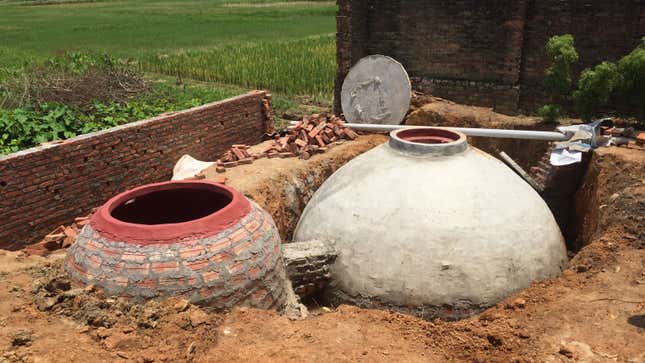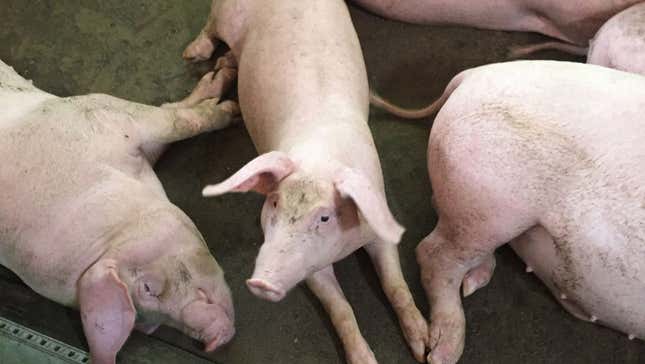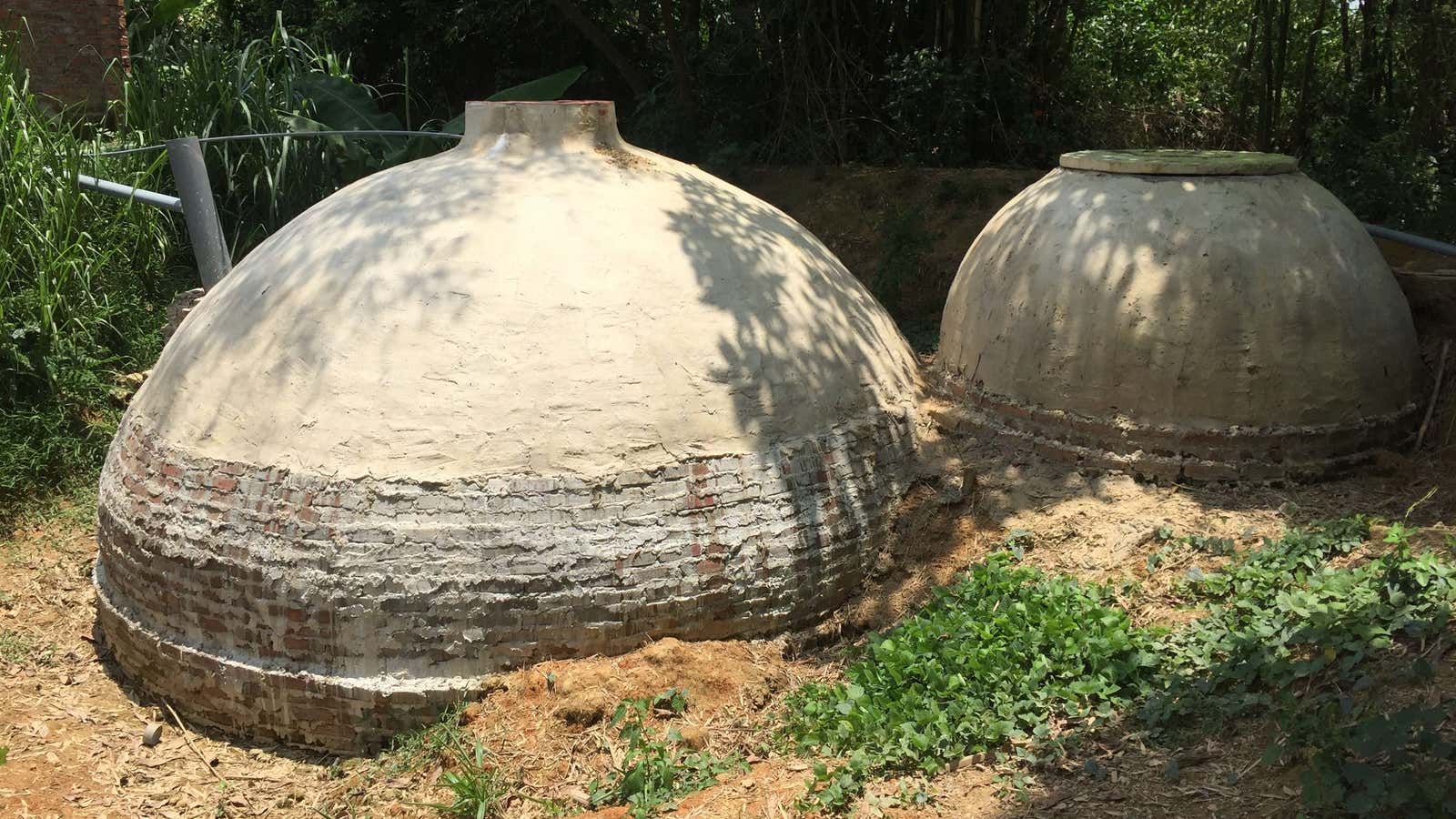Hanoi, Vietnam
Le Thi Vinh used to put up with a smoky kitchen, filled with soot particles formed in her muddy stove. That changed in late 2016, when she stopped using firewood but turned to biogas, generated from the waste of the 46 pigs she raises. The biogas generated is enough to support a family of four for three meals a day. But it’s not cheap—the biodigesters needed to make the gas cost about $600 to build, five times Le’s monthly income of VND 3 million ($130).
Le, a 53-year-old farmer, is among the 7 million living in Hanoi, Vietnam’s capital and its second most populous city. The city is filled with diesel-powered motorcycles, some 5 million, choking the air and causing traffic jams.
But Hanoi is changing. In addition to an ambitious plan to ban motorbikes by 2030, Hanoi is one of 63 provinces and cities in the country that is adopting biogas for cooking. Le used her own savings and borrowed money from relatives to build the biodigesters, which are part of a program funded by the Dutch government and Energising Development, a partnership financed by six countries, that uses a localized technology that originated from China. The goal of using biogas is to both breathe cleaner air and fight against climate change, one of the biggest challenges of the century.

Like the rest of the world, Vietnam needs to reduce greenhouse-gas emissions. Animal husbandry contributes around 5% (link in Vietnamese) to Vietnam’s GDP—the country’s pork output is ranked sixth in the world. Without proper care, pig waste not only pollutes the environment, but also naturally degrades to produce methane. Burning methane produces carbon dioxide, which is a greenhouse gas, but simply letting methane escape is worse, because it is 84 times more powerful in warming the planet than CO2.

Moreover, those not using clean-burning biogas rely mostly on wood-burning stoves, which release fine carbon particles into the air. These particles are easily lodged in lungs and can causes diseases, such as lung cancer and heart disease. Household air pollution from inefficient cooking methods kills nearly 4 million people in poor countries each year.
So Le’s biogas plant is a win-win for fighting against climate change and cutting indoor pollution. That’s why biogas fits into Vietnam, where 60% still live in rural areas. In 2003, SNV, a Dutch NGO, began helping Vietnam build biogas digesters, which store animal waste, in people’s backyards. As of June this year, the country had approximately 170,000 biodigesters, according to Nguyen Thi Thu Ha, a program adviser at SNV in Vietnam.
The biodigesters, at an average size of 12 square meters (130 square feet), are helping Vietnam reduce 1.3 million tons of carbon emissions every year, according to Nguyen. The country emitted 230 million tonnes (254 million tons) of carbon emissions last year, accounting for around 0.7% of the world’s total of 32.5 billion tonnes (35.8 billion tons).
In the first phase of the project, which took place between 2003 and 2012, a Vietnamese family got a $100 subsidy to build the biodigesters. In the second phase, between 2013 and 2016, SNV looked at making the whole process more sustainable, for example, by hiring locals to do the masonry. SNV also worked with local banks to give loans below market rate for people to build biodigesters. The organization expects the final phase of the project that began last year to improve the quality of the installed digesters.
But SNV understands that fluctuations in the pork market will ultimately determine the success of biodigesters. In 2017, pork prices in the country halved after China stopped importing live pigs from Vietnam, slowing the installment of biodigesters, said Nguyen. Hoang Van Tan, a 42-year-old who has installed at least a thousand biodigesters since becoming a mason seven years ago, said he used to install 10 biodigesters per month in 2015, but since pork prices fell, have installed only two to three each month.
Vietnam is facing pressure from both sides. On the one hand, the country’s energy regulator says Vietnam is likely to face electricity shortages in the next five years, as demand outstrips supply. To overcome that challenge, it has been using more fossil fuels, especially coal (pdf, p.2), in its energy mix. On the other hand, the country needs to cut emissions. One way to achieve that is to add renewables, such as solar and wind, to the energy mix. If the SNV biogas project continues to operate and grow, it could set an example for how renewable projects can be developed with the help of foreign aid in a developing country.
The reporting was supported by a climate finance workshop in Vietnam hosted by the Thomson Reuters Foundation.
